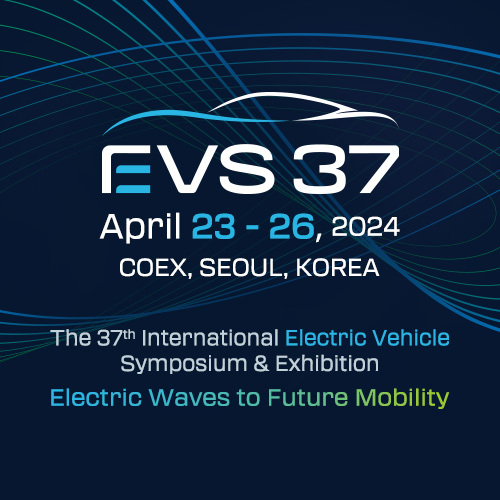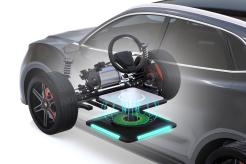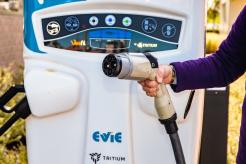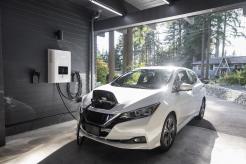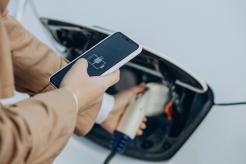Range anxiety, or the fear that an EV will not have enough charge to reach the driver’s intended destination, has been likened to driving a gasoline-powered car with a broken fuel gauge in the middle of nowhere, with no fuel station in sight.
J.D. Power conducted its first Electric Vehicle Experience (EVX) Ownership Study in 2021. Few in the industry were surprised when respondents cited vehicle range as the most crucial factor in their EV selection process.
Although auto manufacturers considered EVs with a range of 120 miles adequate for the average consumer, who travels about 40 miles daily, the J.D. Power survey confirmed that car buyers only feel at ease with higher ranges. Even though the average EV range has reached 200 miles, all models in the survey’s Overall Customer Satisfaction Index that scored above the average had EPA-rated ranges of at least 239 miles (Kia Niro EV). By comparison, all EVs scoring below the survey average had EPA ranges of less than 239 miles (including some that missed the mark, such as the Audi e-Tron at 222 miles).
With that in mind, here’s a sampling of what major EV automakers are doing to improve vehicle range.
Dodge
Due to its launch in late 2024 (with its initial production run already sold out), the Dodge RAM 1500 REV pickup will address range anxiety by combining battery power with an internal combustion range extender. Dodge claims that the RAM 1500 REV will deliver range, payload capacity, and max towing nearly equal to its internal combustion engine (ICE) models. Although the company has not released specifics, industry analysts expect that Dodge will incorporate a small ICE solely to produce electricity for the battery.
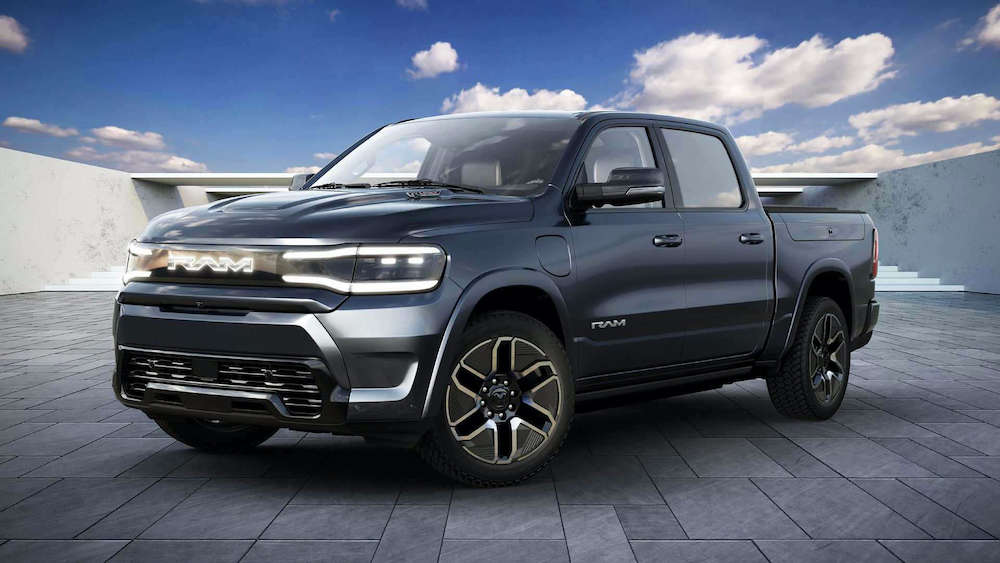
(Image Source: MSN.com)
Ford
Ford engineers have worked to extend EV range by heating inside surfaces. As part of a research project with the European Commission conducted in Cologne, Germany, they equipped an E-Transit delivery van with heated door panels, armrests, sun visors, floor mats, and a heated panel below the steering wheel, comparing their impact on range to results achieved by simply blowing hot air into the vehicle cabin.
Testing occurred in summer and winter, in heavy rain and wind, and on dry and wet roads. Doors and windows were opened frequently as the van made its delivery rounds. Although both cabin heating methods used battery power, Ford found that heating the inside surfaces instead of just the inside air reduced energy consumption by 13 percent. Based on real-world charging patterns, the automaker says that would equate to a 5% increase in range.
Ford is also testing other concepts, including a heat exchanger that uses water warmed by the drive unit to heat the vehicle interior, a cooling system specifically for the battery, and a powertrain conditioning function that maximizes efficiency by optimizing temperatures.
General Motors
GM switched to silicon carbide in its battery systems, supplied through an agreement with Wolfspeed, Inc., to extend the range provided by its Ultium battery platform. Silicon carbide makes batteries more efficient, producing longer or similar ranges from a smaller package. The first EV model built on the Ultium platform was the 2022 GMC Hummer EV, followed by the 2023 Cadillac LYRIQ and the 2023 Chevrolet Silverado EV.
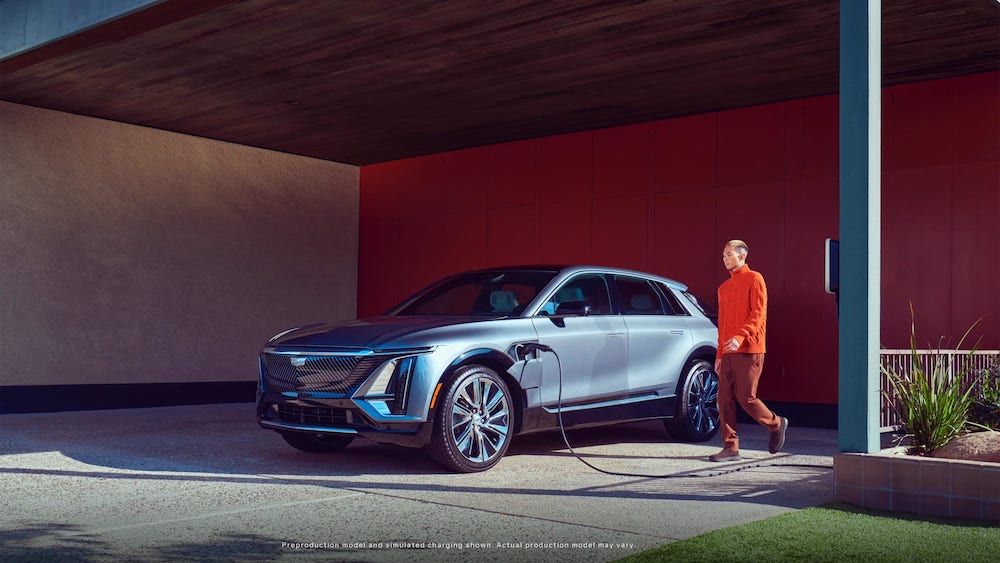
(Image Source: Cadillac.com)
GM is working toward a solid-state battery future. Solid-state batteries are a breakthrough in battery storage capacity; they lose less power in cold weather and don’t catch fire. In 2021 GM began working with POSCO Chemical, a Korean firm involved in the solid-state battery industry, building a new battery factory in the US. At first, the factory will produce components for the Ultium lithium-ion battery platform, but industry analysts expect it to make solid-state batteries eventually.
With the Ultium platform reconfigurable for different-sized EVs, GM has promised to manufacture 30 new models by 2025. The automaker expects to reach 50% EV production in its North America and China factories by 2030 and stop manufacturing gas- and diesel-powered vehicles by 2035.
Tesla
Tesla has always focused on range anxiety being a barrier to the unfettered adoption of EV ownership. Tesla became the U.S. EV market leader in 2018, holding a 63.5 percent market share in 2022.
At a battery-focused event in 2020, the automaker promised a 56 percent reduction in battery pricing with the introduction of its 4680 battery cells. They claimed that the 4680 could also achieve a 54 percent increase in range from a combination of improved cell design, anode and cathode material use, and cell vehicle integration.

(Image Source: Tesla.com)
With an EPA-rated range of 330 miles, a Tesla Model Y equipped with the 4680 integrated structural battery has the theoretical potential to achieve a range of 508 miles. However, as of now, Tesla has not confirmed or denied this calculation by industry analysts.
Ample
Although not an EV manufacturer, Ample is a Silicon Valley startup working with major automakers on the concept of battery swapping stations. These allow EV owners to swap their battery for a fully charged replacement in minutes.
Battery swapping is not an increase in EV range. However, the concept would help relieve range anxiety so drivers won’t have to interrupt their journeys for the charging duration. However, the swapping station model requires the EV to use either an Ample-built battery or an Ample-compatible universal battery structure. If not overcome, this factor could rule out use by legacy EV models even if the concept is otherwise widely adopted by car makers.
Final Thoughts
Proving that automaker efforts are beginning to pay off, EV owners participating in the 2023 edition of J.D. Power’s EVX ownership study have started to shift away from range as a significant concern in favor of traditional factors such as vehicle quality and styling.
But the most powerful result of all the EVX studies is their common finding that EV owners do not want to go back to gas-powered cars. That should provide additional motivation for automakers to succeed in their efforts to increase range and expand model availability.

